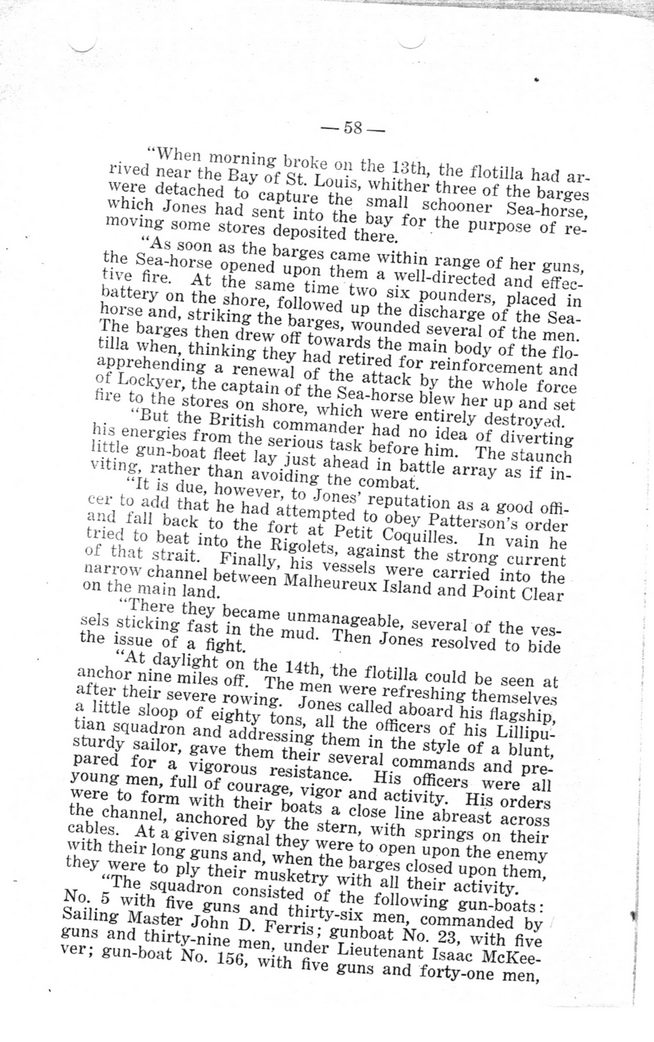This text was obtained via automated optical character recognition.
It has not been edited and may therefore contain several errors.
? 58 ? ?When morning broke 011 the 13th, the flotilla had arrived near the Bay of St. Louis, whither three of the barges were detached to capture the small schooner Sea-horse, which Jones had sent into the bay for the purpose of removing some stores deposited there. ?As soon as the barges came within range of her guns, the Sea-horse opened upon them a well-directed and effective fire. At the same time two six pounders, placed in battery on the shore, followed up the discharge of the Seahorse and, striking the barges, wounded several of the men. The barges then drew off towards the main body of the flotilla when, thinking they had retired for reinforcement and apprehending a renewal of the attack by the whole force of Lockyer, the captain of the Sea-horse blew her up and set fire to the stores on shore, which were entirely destroyed. ?But the British commander had no idea of diverting his energies from the serious task before him. The staunch little gun-boat fleet lay just ahead in battle array as if inviting, rather than avoiding the combat. ?It is due, however, to Jones? reputation as a good officer to add that he had attempted to obey Patterson?s order and fall back to the fort at Petit Coquilles. In vain he tried to beat into the Rigolets, against the strong current of that strait. Finally, his vessels were carried into the narrow channel between Malheureux Island and Point Clear on the main land. ?There they became unmanageable, several of the vessels sticking fast in the mud. Then Jones resolved to bide the issue of a fight. ?At daylight on the 14th, the flotilla could be seen at anchor nine miles off. The men were refreshing themselves after their severe rowing. Jones called aboard his flagship, a little sloop of eighty tons, all the officers of his Lilliputian squadron and addressing them in the style of a blunt, sturdy sailor, gave them their several commands and prepared for a vigorous resistance. His officers were all young men, full of courage, vigor and activity. His orders were to form with their boats a close line abreast across the channel, anchored by the stern, with springs on their cables. At a given signal they were to open upon the enemy with their long guns and, when the barges closed upon them, they were to ply their musketry with all their activity. ?The squadron consisted of the following gun-boats: No. 5 with five guns and thirty-six men, commanded by Sailing Master John D. Ferris; gunboat No. 23, with five guns and thirty-nine men, under Lieutenant Isaac McKee-ver; gun-boat No. 156, with five guns and forty-one men,

Battle of 1814 Battle-of-the-Gun-Boats-Chapter-5-P58